
Waste of the Day: Nebraska Parks Claimed Employees Logged An Impossible 66-Hour Workday
February 19, 2024
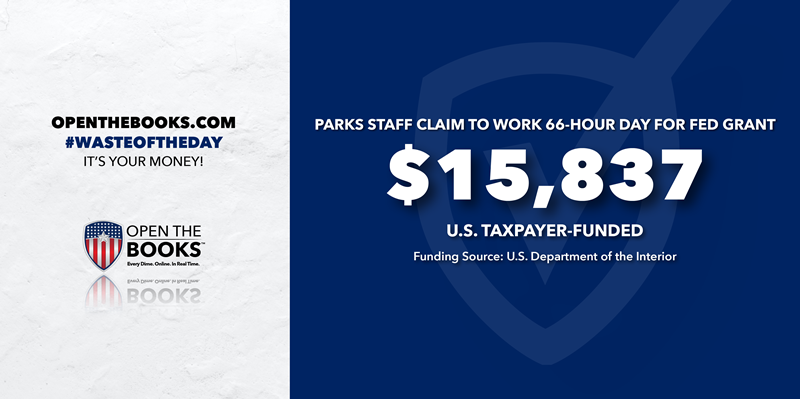
Topline: The Nebraska Game and Parks Commission received $15,837 from a federal grant while claiming an individual volunteer worked up to 66 hours in a single day, according to a Feb. 2 report from the U.S. Department of the Interior’s Inspector General.
Key facts: The DOI’s U.S. Fish and Wildlife Service provides grants to state agencies to restore and maintain fish habitats.
The Fish and Wildlife Service reimburses states for 75% of the costs related to fish habitat projects. States must cover the other 25%, either with actual cash or with an equivalent item such as hours of labor.
From 2019 to 2021, the Nebraska Game and Parks Commission claimed that their volunteers worked 16,436 hours to help cover the state’s 25% share of federal grants.
But the Inspector General found that Nebraska incorrectly reported the number of volunteer hours.
Three instructors for an Aquatic Education Program each claimed to have worked an impossible amount of time, with one instructor logging 66 hours in a single day.
Another volunteer did not log any hours for themself, yet documents presented to the federal government for reimbursement said the volunteer worked for 20 hours.
The Inspector General questioned 219 hours in total from several volunteers, which Nebraska claimed were worth $5,279 toward the state’s share of grant funding. Nebraska was then awarded triple that money from the federal government for those hours.
The report only reviewed about 10% of volunteer hours, so there could be more undiscovered errors. The Inspector General did not indicate whether the discrepancy was a genuine mistake or indicative of fraud.
Background: The Nebraska parks department was also giving some of its employees high pay.
The department paid out 20 six-figure salaries in the 2019-2021 period covered in the IG report, according to records at OpenTheBooks.com. Director James Douglas’s salary reached up to $169,000 in 2021; Nebraska’s governor made just $105,000 that year.
Supporting quote: The Nebraska parks department disagreed that the 66-hour workdays were excessive, since they included preparation time.
“Over the course of this program, the project leader and our volunteers have put on multiple clinics and events. When planning an event with over 150 participants and multiple volunteers, it is our experience that planning occurs for multiple months in advance,” Federal Aid Administrator Tammy Snyder wrote in her response to the IG.
Summary: One has to admire Nebraska’s passion for conserving wild fish habitats; it must take incredible effort to work more than 24 hours in a single day.
Expanded Obamacare Coverage Could Cost $128 Billion More Than Expected
February 20, 2024
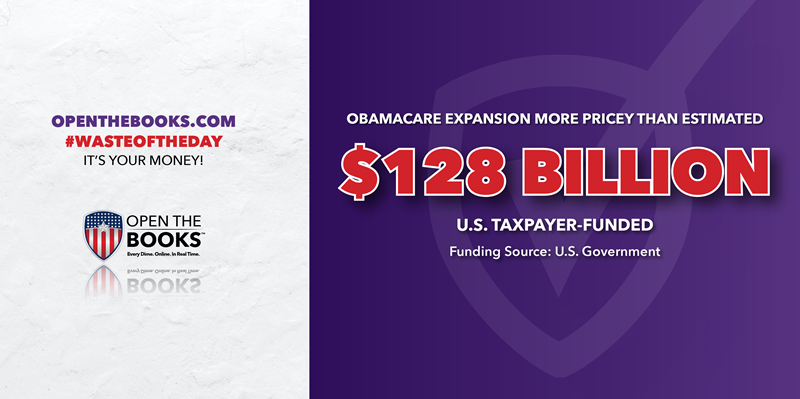
Topline: An expansion of Affordable Care Act subsidies was supposed to cost $64 billion for three years. But Obamacare plans are now so cheap that demand has skyrocketed, and the Wall Street Journal estimates that the actual price tag will be $192 billion or more.
Key facts: President Joe Biden passed the American Rescue Plan Act in 2021 to address the financial impact of Covid-19. The law temporarily extended the eligibility requirements of the Affordable Care Act, allowing those living at more than 400% above the poverty level to purchase health insurance with a discount from the federal government.
The law also increased Obamacare’s average monthly tax credit to $527 in 2023.
Obamacare now often costs even less than employer-provided insurance, according to the Wall Street Journal. Some middle-class Americans are opting to take federal money to buy Obamacare rather than use the insurance given by their workplace.
The most recent Obamacare enrollment opened on November 1, 2023, and ended Jan. 16. A record 21.3 million people enrolled, including five million new subscribers, according to the Department of Health and Human Services.
The Wall Street Journal “conservatively” estimates that this will cost the federal government three times the initial $64 billion, for a total of $192 billion, including a $70 billion this year alone. Health policy think tank KFF is less optimistic, estimating that Obamacare cost $90 billion in 2023.
When Sens. Chuck Schumer (D-NY) and Joe Manchin (D-WV) helped extend the subsidies through 2025, they claimed it would cost only $21 billion per year. The price tag now seems to be triple or quadruple that number.
Background: Obamacare is administered by the HHS, whose massive payroll isn’t helping the taxpayer burden.
The HHS sent pay checks to almost 90,000 people in 2022, according to auditors at OpenTheBooks.com. There were 3,583 employees making more than $200,000 and 13 people making more than $400,000.
Critical quote: “When it comes to the Manchin-Schumer so-called ‘inflation reduction’ proposal, another shoe has just dropped,” Sen. Lindsey Graham (R-SC) said before the Inflation Reduction Act passed.
“[Congressional Budget Office] indicates that the Obamacare subsidies can go to a family of four earning $304,000 a year. This is, by any reasonable definition, people who are doing well and not in need of subsidies from the government.”
Supporting quote: “Numbers do not lie: Not only is demand for Marketplace insurance coverage at an all-time high, but the Marketplaces are delivering on the Affordable Care Act’s promise to provide the peace of mind that comes with having health insurance to millions of Americans,” Centers for Medicare and Medicaid Services Administrator Chiquita Brooks-LaSure said in a January press release.
Summary: The Affordable Care Act is succeeding at insuring millions of Americans, but the cost to taxpayers is skyrocketing as families who likely don’t need government assistance join Obamacare.
NJ Governor Spent Thousands On Snacks Including At Taylor Swift Concert
February 21, 2024
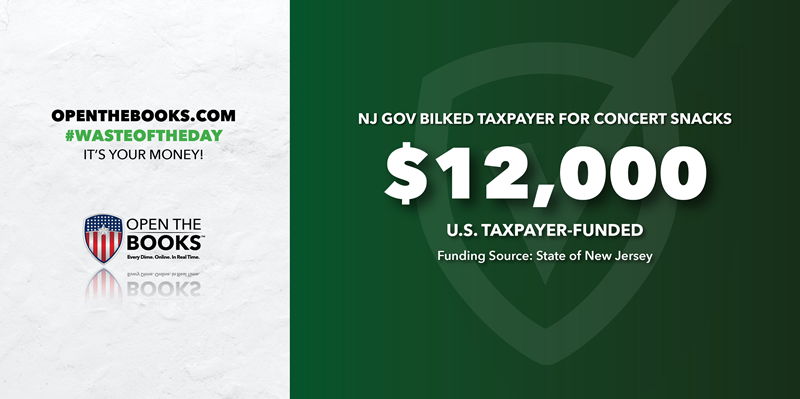
Topline: New Jersey Gov. Phil Murphy used a state expense account to buy almost $12,000 of snacks and drinks at stadium events in 2018 and 2019, including almost $1,000 at a Taylor Swift concert, according to a recent report by Politico.
Key facts: New Jersey’s budget gives the governor an annual $95,000 expense account for “official expenses,” which cannot include “personal purposes.”
That didn’t stop Murphy from racking up food bills at MetLife Stadium, home of the New York Jets and Giants in East Rutherford, New Jersey.
Murphy used taxpayer money at six different MetLife events, including almost $3,000 at a U.S. vs. Mexico soccer game. Purchases included $90 worth of Aquafina water, $45 for extra guacamole and $936 of snacks at Swift’s “Reputation” tour, Politico found.
A spokesperson said Murphy originally paid for the food with his own money and expected to be reimbursed by New Jersey’s Democratic State Committee. When that did not happen, the state “stepped up” to cover the costs, the spokesperson said.
Now that attention is on the issue, Murphy’s office is asking the Democratic State Committee to reimburse taxpayers for the cost.
Murphy also spent $280,000 since 2018 on food for receptions at the governor’s mansion, Politico reported. Another $100,000 went toward renovating the windows, bathrooms and more at the mansion.
One $3,000 dinner was hosted at Murphy’s personal home, and records do not indicate how the meal was related to government business.
Background: Murphy’s snacking spree is, sadly, in line with New Jersey tradition. Former Gov. Chris Christie was caught spending almost $83,000 at MetLife Stadium back in 2015, making gluttony, oddly, a bipartisan issue.
The food may have not made a huge dent in the state’s finances, but overall spending has increased almost every year since Murphy took office in 2018.
New Jersey paid $61.4 billion to outside vendors in 2018. Last year, the state spent $86.2 billion, including $23 billion in grants awarded, according to OpenTheBooks.com.
Spending topped out at nearly $99 billion in 2021.
Summary: Perhaps one extravagant night at MetLife Stadium doesn’t quite qualify Murphy as a “Swiftie,” but taxpayers would likely prefer to buy tickets for themselves rather than fund $12,000 of their governor’s stadium concessions.
Throwback Thursday: NASCAR Ford Bearing $350,000 FCC Ad Crashes Into Wall
February 22, 2024
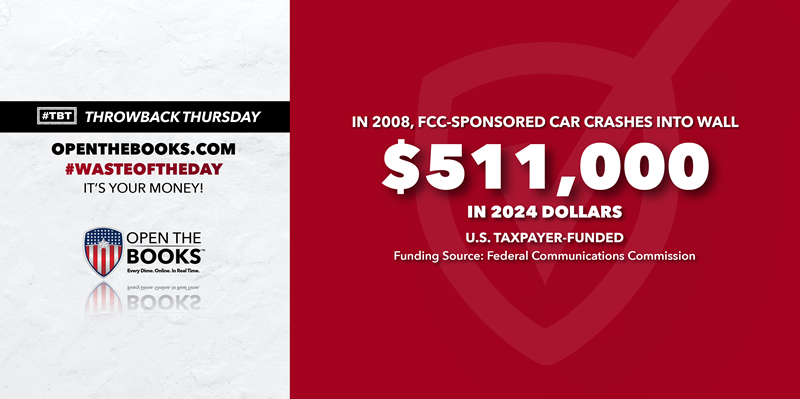
Throwback Thursday!
Topline: In 2008, the Federal Communications Commission announced that all TV stations would be required to broadcast using digital signals instead of analog — and decided to spend $350,000 to turn a NASCAR car into a “Digital TV Transition Ford” advertising that fact. It cost $511,000 in 2024 dollars.
There was just one problem, aside from the wasteful spending: the car didn’t even make it through its first race fully intact.
That’s according to the “Wastebook” reporting published by the late U.S. Senator Dr. Tom Coburn. For years, these reports shined a white-hot spotlight on federal frauds and taxpayer abuses.
Coburn, the late U.S. Senator from Oklahoma, earned the nickname "Dr. No" by stopping thousands of pork-barrel projects using the Senate rules. Projects that he couldn't stop, Coburn included in his oversight reports.
Coburn's Wastebook 2008 included 65 examples of outrageous spending worth more than $1.3 billion, including the $350,000 DTV.gov Ford.
Key facts: The FCC, under Chairman Kevin Martin’s direction, sponsored driver David Gilliland’s No. 38 car for three races.
The car’s first race in Arizona was nearly finished when Gilliland crashed into a wall in the 485th lap.
The ads likely were unnecessary. A National Association of Broadcasters reporthad already found that awareness of the digital transition was at a “near-universal” level.
The watchdog group Citizens Against Government Waste named Martin their “Porker of the Month'' in October 2008. They suggested that the NASCAR sponsorship served a secondary purpose of ingratiating Martin with North Carolina voters, where NASCAR runs four office buildings and where Martin hoped to launch future political campaigns.
The FCC also spent $1 million to advertise digital television in AARP magazine, among other purchases.
Critical quote: Even FCC Commissioner Jonathan Adelstein confessed that the car “doesn’t seem like the most efficient use of resources.”
Supporting quote: Martin didn’t seem to mind that his car met a grim fate. "Except for the cars that win the races, the cars that are in wrecks get a lot of attention," he said.
Summary: The FCC’s $350,000 advertising campaign was arguably more successful than anyone could have hoped; once the “Digital TV Transition Ford” smashed into a wall, it made headlines around the country.
USAID Offers $1.5 Million to Study 'Gender and Climate Change' in Pakistan
February 23, 2024
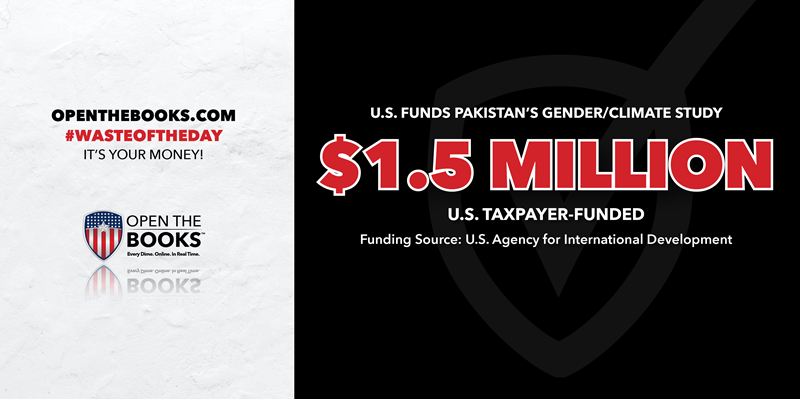
Topline: The United States Agency for International Development plans to give up to $1.5 million in grants to U.S. universities to study the relationship between “gender and climate change” in Pakistan.
Key facts: USAID is asking universities to submit three-page research proposals that will set guidelines for a new Water, Climate and Gender Activity fund for Pakistan.
The fund will potentially be used to make climate and water management policies more “gender-sensitive” and to address the “gendered impacts of natural disasters,” among other objectives.
The project is part of the U.S.-Pakistan Green Alliance, a new partnership formed early last year. The agreement recently helped complete a $150 million dam refurbishment and a $4.5 million project to improve fertilizer efficiency.
Background: USAID has already tackled similar issues by contributing more than $5 million to the Climate Gender Equity Fund, a partnership with private companies such as Amazon that pushes for “gender equity in climate finance” in Africa. The fund’s goal is to raise $60 million combined from the public and private sectors.
USAID also boasts a massive payroll. The agency had 4,364 employees in 2022 and nearly all of them made at least $100,000, according to public records that OpenTheBooks.com analyzed. Over 1,500 employees made more than $150,000.
OpenTheBooks also previously reported that USAID is among the top foreign aid spenders in the federal government. Almost half of the $47 billion the U.S. spent in foreign aid in 2018 came from USAID. The agency sent out another $41.5 billion in aid in 2022, according to its website.
Supporting quote: “The impacts of climate change are not gender neutral,” USAID Administrator Samantha Power said of the issue in general.
“Together, we can break apart these silos between gender and climate, recognize the crucial role women have to play in mitigating and adapting to climate change, empower them to lead, and by doing so, ensure our fight against this crisis is more effective. Climate change is sexist; our response shouldn’t be.”
Summary: Individually, gender inequality in developing countries and climate change could be among the world’s most pressing issues. But perhaps there’s a better use of grant money than studying the relationship between the two, especially given the funds that have already been spent on it.
The #WasteOfTheDay is presented by the forensic auditors at OpenTheBooks.com.